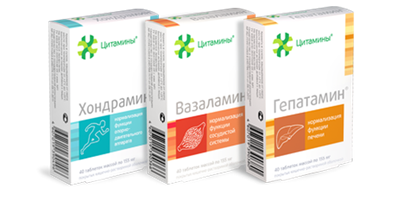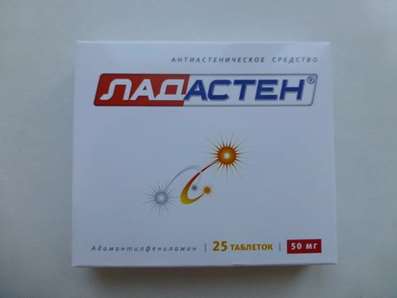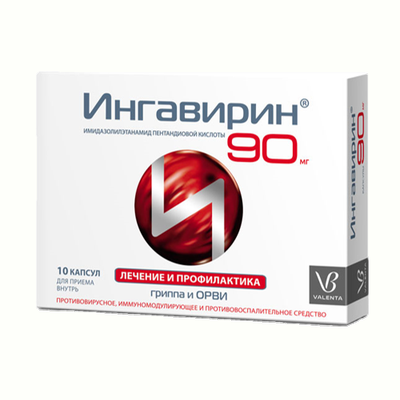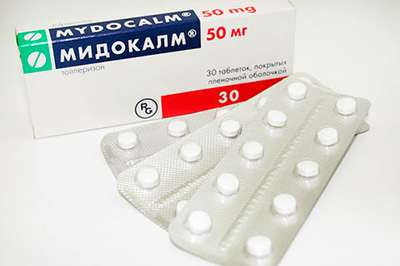Instruction for use: Levothyroxine sodium (Levothyroxinum natrium)
I want this, give me price
Pharmacological group of substance Calcitonin
Hormones of the thyroid and parathyroid glands, their analogs and antagonists (including antithyroid agents) / 67 /
Nosological classification (ICD-10)
C73 Malignant neoplasm of thyroid
Thyroid cancer, Thyrotropin-Dependent Thyroid Carcinoma, Anaplastic thyroid cancer, Thyroid carcinoma, Medullary thyroid cancer, Thyroid tumors, Papillary thyroid cancer
E01.1 Multi-node (endemic) goiter associated with iodine deficiency
about, Thyroid Node, Nodular goiter of the thyroid gland, Endemic goiter
E03 Other forms of hypothyroidism
hypothyroidism, Hypothyroid conditions, Thyroid hypothyroidism, Diagnosis of hypothyroidism, Myxedema, Primary hypothyroidism, Simple goitre,Spontaneous hypothyroidism, Iatrogenic hypothyroidism
E03.9 Unspecified hypothyroidism
Hypothyroidism, Hypothyroid conditions, Thyroid hypothyroidism, Diagnosis of hypothyroidism, Simple goiter, Hypothyroid edema,Wolf-Chaikoff effect, Congenital hypothyroidism, Secondary hypothyroidism, Hypothyroid obesity, Hypothyroid status, Obstructive hypothyroidism
E04.1 Non-toxic single-nodular goiter
Thyroid Node, Nodular goiter of the thyroid gland
E04.2 Non-toxic multinodal goiter
Thyroid Node, Nodular goiter of the thyroid gland
E05 Thyrotoxicosis [hyperthyroidism]
Von Bazedova's disease, Basedova's disease, Hyperthyroidism, Goiter toxic diffuse, Increased function of the thyroid gland, Thyrotoxic reaction, Toxic diffuse goiter, Toxic goiter, Thyroid enlargement with hyperthyroidism, The phenomenon of iodine-Bashedov
E05.0 Thyrotoxicosis with diffuse goiter
Goiter toxic diffuse, Toxic goiter, Diffuse thyrotoxic goiter, Graves disease, Diffuse toxic goiter, Goiter diffuse toxic, Parry's disease, Flanyani disease, Von Bazedova's disease, Toxic diffuse goiter
E06.3 Autoimmune thyroiditis
Autoimmune thyroiditis Hashimoto, Thyroid Bladder Lymphadenoid, Hashimoto's disease, De Kervena thyroiditis, Goiter lymphomatous, Goiter lymphocytic, Zob Hashimoto, Lymphadenoid goiter, Thyroiditis Hashimoto, Hashimoto thyroiditis, Struma Hashimoto
E91 * Diagnosis of endocrine system diseases
Diagnosis of hypogalactia, Diagnosis of thyroid suppression, Diagnostic test of thyroid function, Diagnosis of hypothyroidism, Diagnosis of disorders of gonadotropic pituitary gland function, Thyroid scintigraphy test, Diagnostics of pheochromocytoma
Code CAS
25416-65-3
Characteristics
Left-handed isomer of thyroxine.
Pharmacology
Pharmacological action - replenishing deficiency of thyroid hormones.
Mechanisms of metabolic effects include receptor binding to the genome, changes in oxidative metabolism in the mitochondria, and regulation of the flow of substrates and cations both inside and outside the cell. In small doses it has an anabolic effect, in medium doses it stimulates growth and development, increases the oxygen demand of tissues, regulates the metabolism of proteins, fats and carbohydrates, increases the functional activity of the cardiovascular system and the central nervous system, in large - inhibits the production of thyrotropin-releasing hormone of the hypothalamus and Thyroid-stimulating hormone of the pituitary gland.
If administered orally, 80% of the dose taken is absorbed almost exclusively in the upper part of the small intestine, eating reduces absorption. Cmax in the serum is reached approximately 5-6 hours after administration. Binding to whey proteins (thyroxin-binding globulin, thyroxine-binding prealbumin and albumin) is more than 99%. In various tissues, monoiodiodination of sodium levothyroxine occurs with the formation of triiodothyronine (T3) and inactive products. Thyroid hormones are metabolized mainly in the liver, kidneys, brain and muscles. A small amount is subjected to deamination and decarboxylation, as well as conjugation with sulfuric and glucuronic acids (in the liver). Metabolites are excreted in urine and bile. T1 / 2 - 6-7 days. With thyrotoxicosis, T1 / 2 is shortened to 3-4 days, with hypothyroidism extended to 9-10 days.
The clinical effect with hypothyroidism is manifested after 3-5 days. Early diffuse hyperplastic goiter decreases or disappears within 3-6 months, at late nodal stages, a significant reduction in the size of the thyroid gland is observed only in 30% of cases, but almost all patients are prevented its further growth.
Indications
Hypothyroid conditions of different etiology (including those caused by surgical or medicamentous effects), prevention of recurrence of nodular goiter after resection of the thyroid gland, diffuse euthyroid goiter; Diffuse toxic goiter - after the creation of an euthyroid state by thyreostatics (in the form of combined or monotherapy); Thyroid cancer after surgical treatment (in order to suppress tumor recurrence and as a substitute therapy), as a diagnostic tool in the test of thyroid suppression. As part of complex therapy: Graves disease, autoimmune thyroiditis.
Contraindications
Hypersensitivity, untreated thyrotoxicosis, acute myocardial infarction, acute myocarditis, untreated adrenocortical insufficiency (should be compensated before the start of therapy).
Restrictions for use
IHD (atherosclerosis, stenocardia, myocardial infarction in history), arterial hypertension, arrhythmia, sugar and diabetes insipidus, severe long-term hypothyroidism, malabsorption syndrome (dose adjustment may be required), pituitary insufficiency, elderly age.
pregnancy and lactation
During pregnancy and breastfeeding, therapy with levothyroxine sodium, prescribed for hypothyroidism, should continue. During pregnancy, an increase in the dose of the drug is required due to an increase in the level of thyroxin-binding globulin. The amount of thyroid hormone secreted with breast milk (even when treating with high doses of the drug) is not enough to cause any disturbances in the child during breastfeeding. Application in pregnancy in combination with thyreostatics is contraindicated, because Taking levothyroxine sodium may require an increase in thyroid doses. Since thyreostatics, in contrast to levothyroxine sodium, can penetrate the placenta, the fetus may develop hypothyroidism.
Action category for fetus by FDA - A.
During breastfeeding, the drug should be taken with caution, strictly at recommended doses, under the supervision of a doctor.
Side effects
Tachycardia, heart rhythm disturbances, chest pain, tremor, anxiety, insomnia, hyperhidrosis, weight loss, diarrhea, alopecia, adrenal insufficiency (hypophysial or hypothalamic hypothyroidism), kidney function in children, allergic reactions (skin rash, itching Skin).
Interaction
Reduces the effect of insulin and oral antidiabetic drugs, cardiac glycosides, enhances - indirect anticoagulants, tricyclic antidepressants. Kolestyramin, colestipol, aluminum hydroxide reduce plasma concentration due to inhibition of absorption in the intestine. Phenobarbital and phenytoin accelerate metabolic clearance without increasing the proportion of free T3 and T4 in the blood. Estrogens increase the concentration of thyreoglobulin-related fraction (efficacy is reduced). Protein binding changes anabolic steroids, asparaginase, clofibrate, furosemide, salicylates, tamoxifen. Amiodarone, aminoglutethimide, aminosalicylic acid, ethionamide, antithyroid drugs, beta adrenoblockers, carbamazepine, chloral hydrate, diazepam, levodopa, dopamine, metoclopramide, lovastatin, somatostatin, etc. can alter the levels of thyroid and thyroid-stimulating hormones, usually affecting synthesis, secretion , Distribution, metabolism, action or elimination of thyroid hormones or altering the secretion of TSH.
Overdose
Symptoms: thyrotoxic crisis, sometimes delayed for several days after taking.
Treatment: the appointment of beta-adrenoblockers, intravenous corticosteroids, plasmapheresis.
Routes of administration
Inside.
Precautions
It is recommended to periodically determine in the blood the content of thyroid-stimulating hormone, the elevated level of which indicates a dose insufficiency. The adequacy of suppressive thyroid therapy is also estimated by suppressing the seizure of radioactive iodine. With a long-term multinodal goiter, a stimulation test with thyrotropin-releasing hormone should be performed before the start of treatment. In most cases with hypothyroidism the metabolic status should be restored gradually, especially in elderly patients and patients with cardiovascular pathology. For elderly patients, the initial dose should not exceed 50 μg. When used in the II and III trimesters of pregnancy, the dose is usually increased by 25%. With caution appoint with severe long-term hypothyroidism of the thyroid gland. Before the start of treatment should be excluded the possibility of hypophyseal or hypothalamic hypothyroidism.
Health care professionals in Australia report an update on the use of levothyroxine sodium - on including a warning about an increased risk of fractures associated with taking excessive doses of drugs.
The results of studies conducted in Canada and Scotland, indicate an increased risk of fractures associated with taking excessive doses of drugs with long-term replacement therapy with thyroxine.
Two recent large trials have evaluated the risk of fractures in patients with long-term thyroxine replacement therapy. A case-control study in Canada involved 213511 patients over the age of 70 who took an average of 3.8 years for thyroxine. The thyroxine doses in this study were classified as follows: high (more than 93 μg / day), medium (44-93 μg / day) and low (less than 44 μg / day). It was shown that high doses of thyroxin are associated with an increase in fracture risk by 3.5 times, averages of 2.6 times in comparison with low doses of the drug (the results are statistically significant).
In the observational cohort study in Scotland, there were 17684 patients over the age of 18 years taking an average of 4.5 years of thyroxine. In accordance with the TSH level, the patients were distributed as follows: suppression of TSH (less than 0.03 mU / L) low level (0.04-0.4 mU / L), normal (0.4-4.0 mU / L) , High (more than 4 mU / l). A statistically significant twofold increase in the risk of fractures in patients with TSH suppression was found in comparison with patients with normal TSH levels.
The updated information about the preparations of thyroxin contains a warning about the effect of thyroxin on bone mineral density. Patients receiving treatment with thyroxine are advised to use it at the minimum doses necessary to achieve the desired clinical and biochemical response.
It should be borne in mind that with therapy with levothyroxine, regular monitoring of the TSH level and appropriate correction of thyroxine doses should be carried out.
In addition to increasing the risk of osteoporosis, an excess of thyroxine may also increase the risk of arrhythmia, muscle weakness, especially in the elderly.

 Cart
Cart





